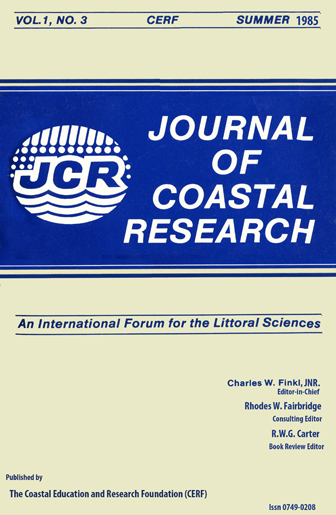Redefinition of Shore-Breaker Classification as a Numerical Continuum and a Design Shore-Breaker
Keywords:
Collapsing breaker, design shore-breaker, impact pressure, plunging wave, shore-breaking wave, spilling wave, surf similarity parameter, surging wave, wave crestAbstract
Based on an initial appraisal of data, new considerations are used on which to base a least equivocal numerical definition of shore-breaking waves. Redefinition is based on the amount of the wave crest. H”b, measured from the wave crest top down, involved in shore-breaking, and is given by: H”b/ Hb = tanh 0.4 ξb where Hb is the shore-breaking wave height, and ξb is a slightly modified version of the surf similarity parameter. The above equation also appears to represent the position at which the maximum impact pressure in a shore-breaking wave occurs. Relating equations are: zmax/Hb = 2.12 - tanh 0.4 ξb or zmax SWL/ Hb = 0.84 – tanh 0.4ξb in which zmax and zmax SWL the vertical distance above the bed and still water level (SWL) at shore-breaking respectively, where the maximum horizontal impact pressure occurs. Available impact pressure data indicates that the shore-breaker with the most destructive potential has a value of ξb = 1.0. This results in a design shore-breaking wave which imparts the greatest horizontal impact at a distance of O.62 Hb above the wave trough or 0.46 Hb above the SWL. Recalibration of the numerical results suggests the following modification in the existing descriptive shore-breaker type scale: ξb < 0.64, spilling shore-breakers; ≅ 0.64 to5.0, plunging shore-breakers; > 5.0, surging shore-breakers.
Downloads
Published
1985-07-30
Issue
Section
Articles


